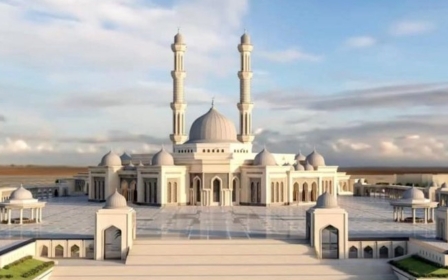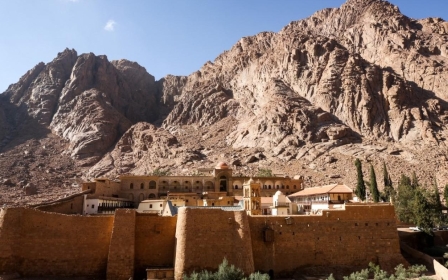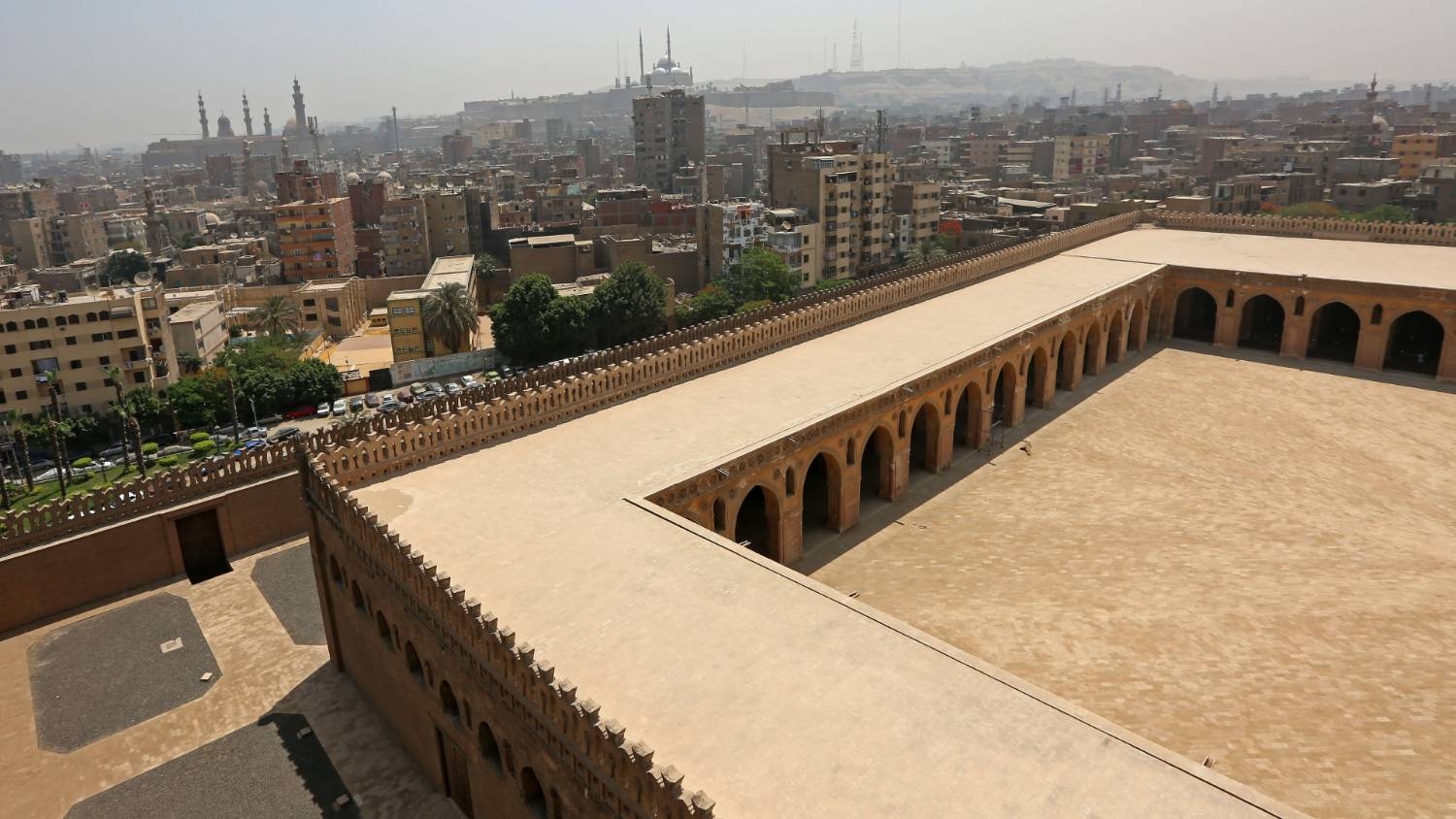
In pictures: How Cairo's mosques tell Egypt's history
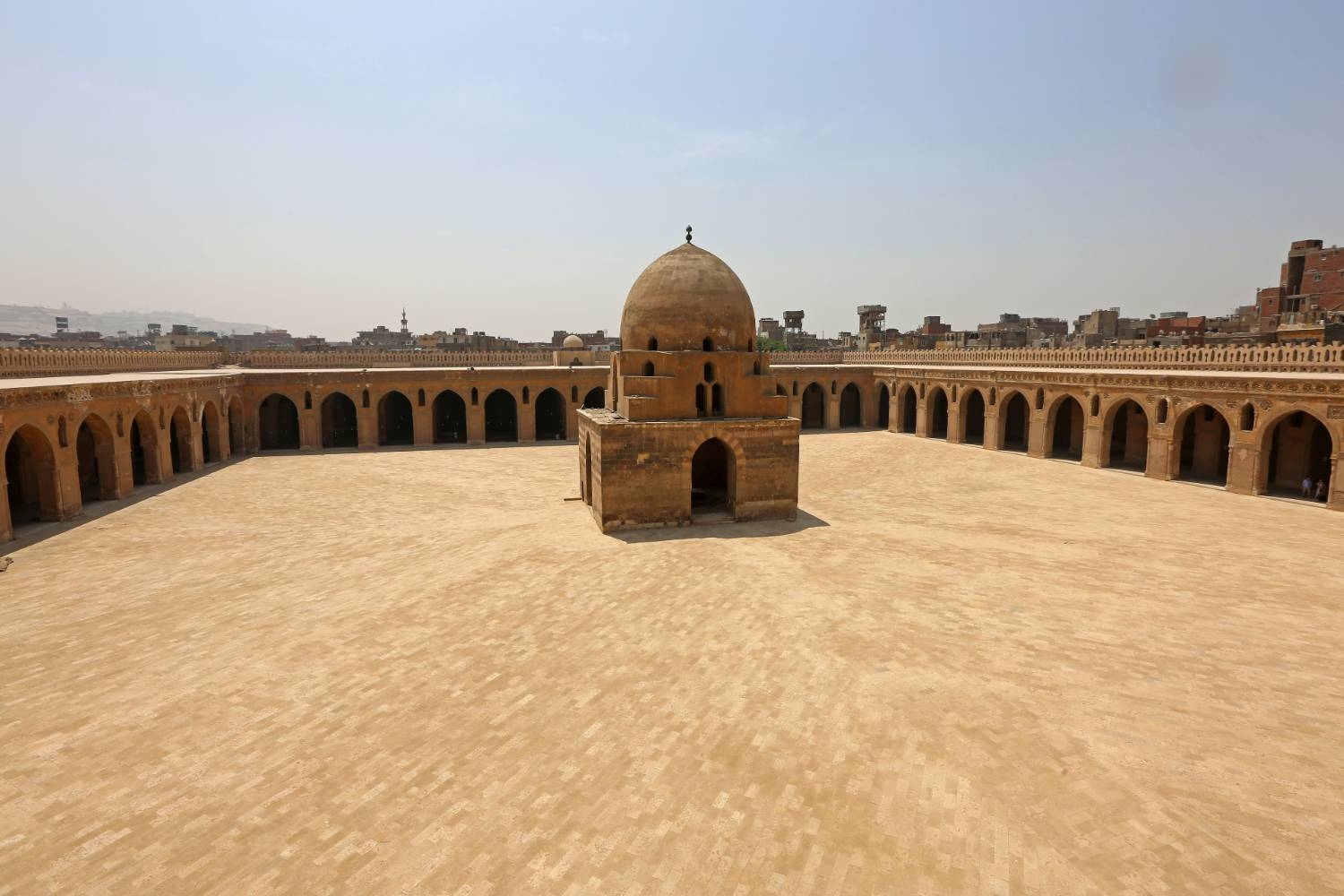
No vista of Cairo would be complete without the minarets and domes of the city's hundreds of mosques dotting the skyline. Each house of worship has a story to tell, and many bear witness to pivotal moments in Egypt's history.
The Muslim conquest of Egypt began under the Rashidun caliphate in the mid-seventh century. Forces led by Amr ibn al-Aas defeated the Byzantines who had ruled the region for centuries, opening up the rest of North Africa to the Arabs.
Al-Aas built a settlement along the River Nile, called Al-Fustat, which roughly corresponds to modern Cairo, and within its confines commissioned the city's first mosque. It would be the first of hundreds, with successive Muslim dynasties adopting their own architectural styles to leave their mark on the city; from Arab dynasties, such as the Umayyads and Abbasids, to North Africans, such as the Fatimids and the Turkic Ottomans. (Pictured: The Ibn Tulun Mosque, all images: Fadel Dawod)
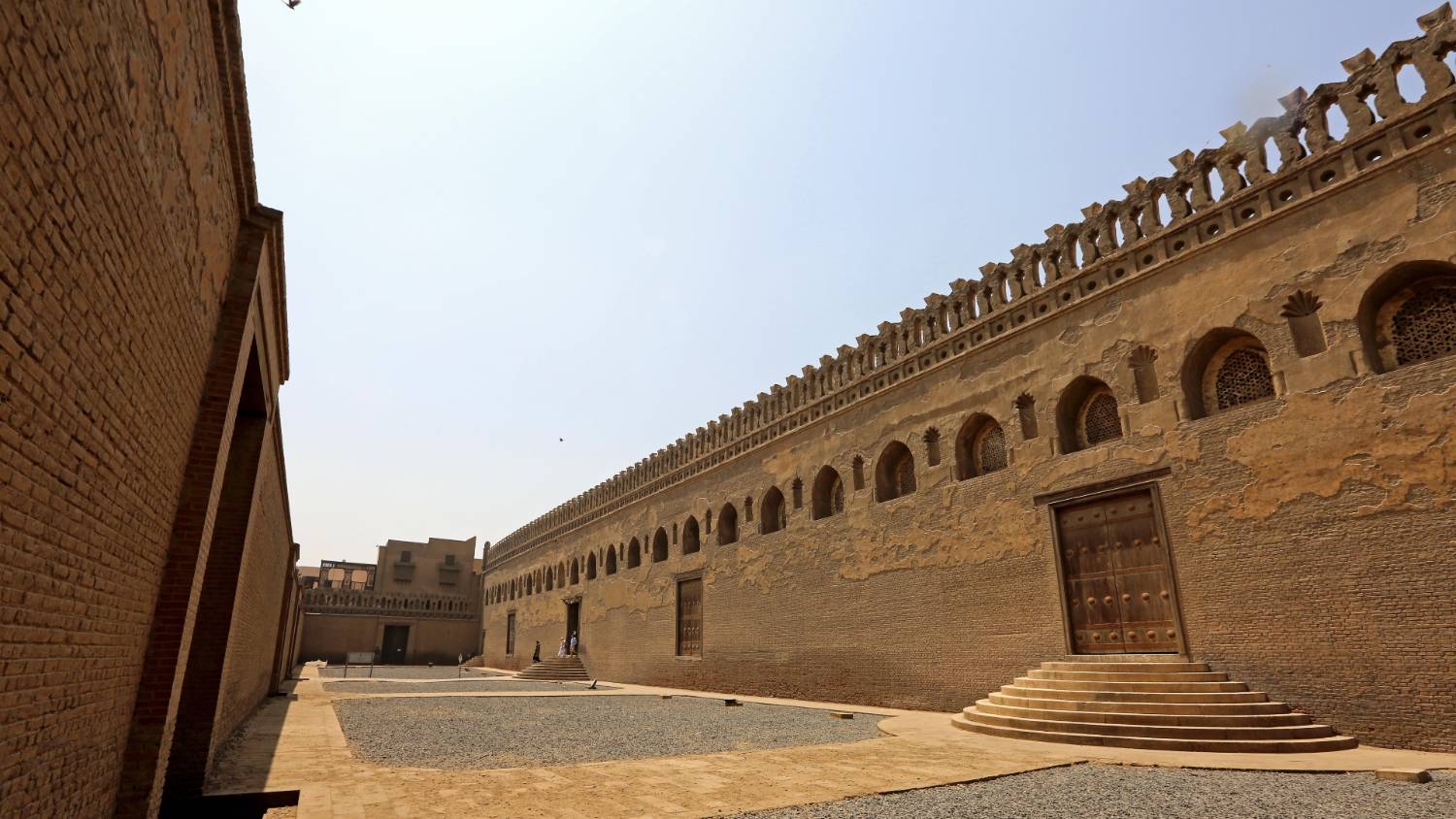
Mosque of Ibn Tulun
Cairo's oldest mosque, which retains its original form, is the Mosque of Ibn Tulun in Al-Qatai, just north of what was Al-Fustat.
It was commissioned in 884 CE by its namesake, Ahmad Ibn Tulun, a governor of Egypt under the Abbasid Dynasty. Although he never asserted formal independence from the Abbasid caliph, Ibn Tulun ran his own ship and his era was often referred to as the Tulunid Dynasty.
A former child slave from Baghdad, Ibn Tulun joined the Abbasid army and rose through the ranks, becoming lieutenant in 868 CE and later the governor of Egypt. Also a skilled politician, he managed to manoeuvre himself into a position of de facto autonomy from the Abbasid caliph.

The Ibn Tulun Mosque remains one of the largest in the country, covering an area of around 26,318 sqm, including open areas within the complex.
Built following the traditional designs from Ibn Talun's homeland of Iraq, the large structure contains brick arches and is surrounded with a spacious courtyard. Here a water fountain merrily gurgles, allowing worshippers a place to wash before prayers. This feature was added later, under the Mamluk Sultan Hosam al-Din Lajin (1296).
The fired brick walls are detailed with gypsum decorations, and inside the house of worship repetitive Kufic style calligraphy graces the mosque walls. Notable is the mosque's towering minaret, with its distinctive staircase ascending on the outside of the structure, likely inspired by the Great Mosque of Samarra.
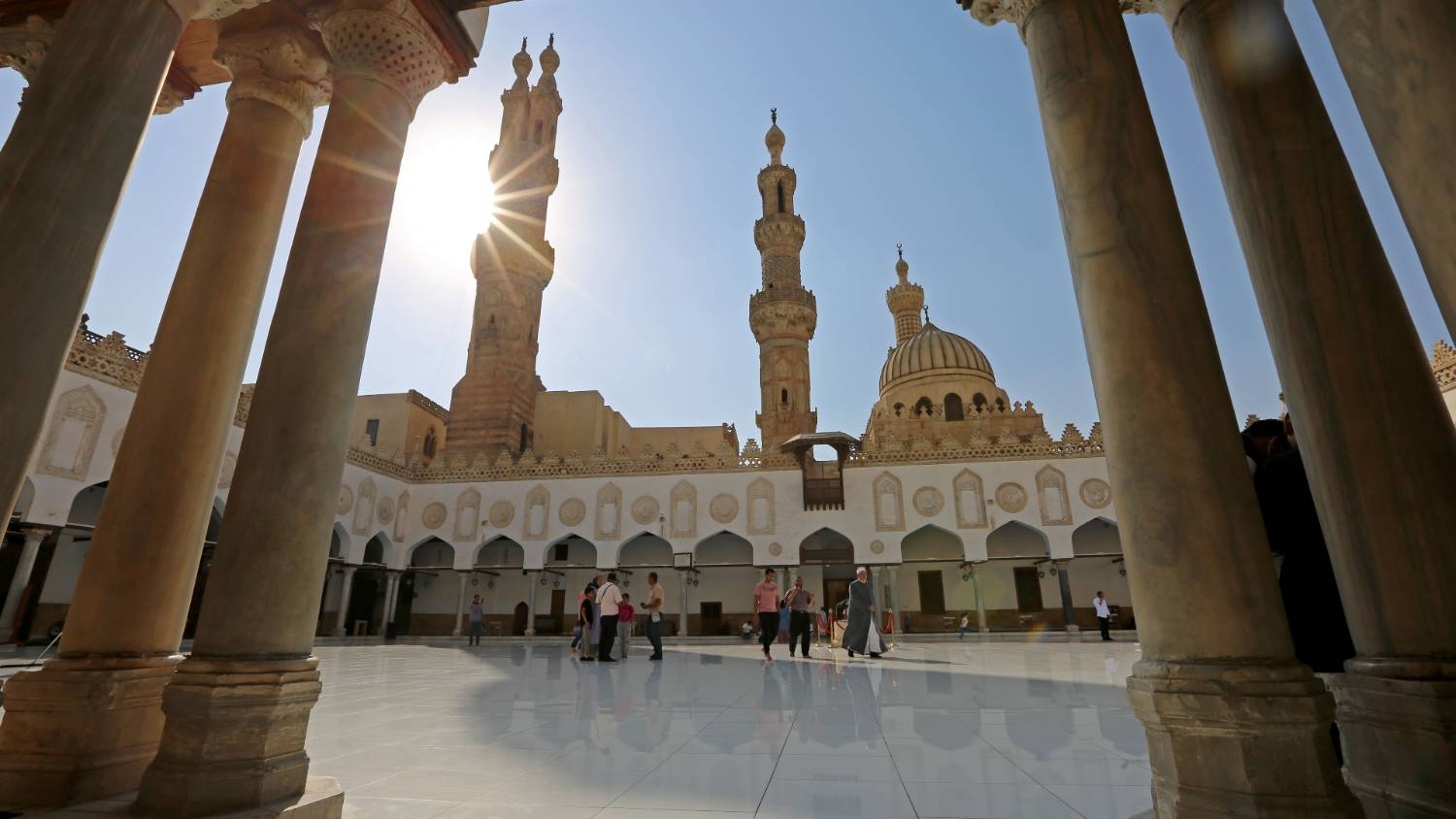
Al-Azhar Mosque
The Al-Azhar Mosque, probably one of the most famous in the country, is known as a centre for Islamic theology and home to the university of the same name, one of the most important Islamic educational institutes in the world.
The complex is said to be named in honour of the Prophet Muhammad's daughter Fatima al-Zahra, who was especially revered by the Shia Ismaili Fatimid dynasty, which commissioned the mosque.
Construction started in 970 CE under Jawhar As-Siqilli and under the rule of the first Fatimid caliph, Al-Muizz ul Din Allah, part of a North African dynasty which claimed descent from the prophet.
Despite being a centre for Sunni jurisprudence today, the university initially taught Shia Islamic theology and drew Shia students from across the Muslim world. When the Islamic warrior Saladin overthrew the Fatimids, he established Sunni dominance in Egypt and turned the institution into a Sunni one.

The mosque is set across 12,000 sqm, and is propped up with the help of around 380 marble columns. Around it's large marble sahn, or courtyard, is a single arcade offering shade from the heat, an addition thought to be influenced by Maghrebi mosque design, where side wings are popular.
The oldest part of the mosque is the original prayer hall, larger in size than the courtyard, and located to the east. Here wooden beams and columns offer support to the weight of the structure. Kufic inscription and gold patterns decorate the mosque's mihrab, the niche that indicates the direction of Mecca.
But what al-Azhar distinctly shows more than some of the other Cairo mosques is the clear influence of Egypt's dynasties. Captured in the mosque's five minarets, each is designed in a style representing the different ruling dynasties of Egypt, added at different moments in history.
One of the minarets, known as Minaret of al-Ghur, stands taller than the others. Commissioned by the Mamluk Sultan Al-Ghuri in 1514, it bears 16 sides, while the others have eight, and has two pointed tips instead of one.

Al-Hussein Mosque
Close to Al-Azhar is another Fatimid mosque, which was built in 1154 on top of a Fatimid cemetery. The Al-Hussein Mosque's minarets' stucco panels date to the 14th century. The rest was reconstructed in 1874 after the Ottoman Sultan Abdul Aziz visited and ordered that marble pillars be brought from Istanbul and a decorative wooden minbar, or pulpit, be installed.
The mosque is named after one of the Prophet Muhammad’s grandsons, Hussein Ibn Ali, also known as Imam Hussein by Shia Muslims. According to popular belief, Imam Hussain's head is buried in the mosque's green and silver mausoleum after he was killed by the Umayyads in 680 CE. His head was then discovered years later and taken to Cairo, were it was buried at this mosque. Other variations of the story say his head was taken and buried at the Umayyad Mosque in Damascus, at a site in Ashkelon (in what is now Israel), or returned to Karbala in Iraq, where it was buried with his body.

The Mosque and Madrassa of Sultan Hassan
Featuring intricately carved niches, arched ceiling and honeycomb muqarnas, or vaulting, said to be influenced by Seljuq architecture, the Mosque of Sultan Hassan is a 14th century complex with a tragic history. During its construction, one of the four 68-metre tall minarets collapsed, killing 300 people.
The structure was commissioned by An-Nasir Badr ad-Din Hasan ibn Muhammad ibn Qalawun, better known as an-Nasir Hasan, in 1357 and completed in 1363 after An-Nasir’s assassination. The Mamluk Sultan first came to power aged 13 in 1347, ruling for four years, and ruled again from 1354 to 1361, until his death at 27.
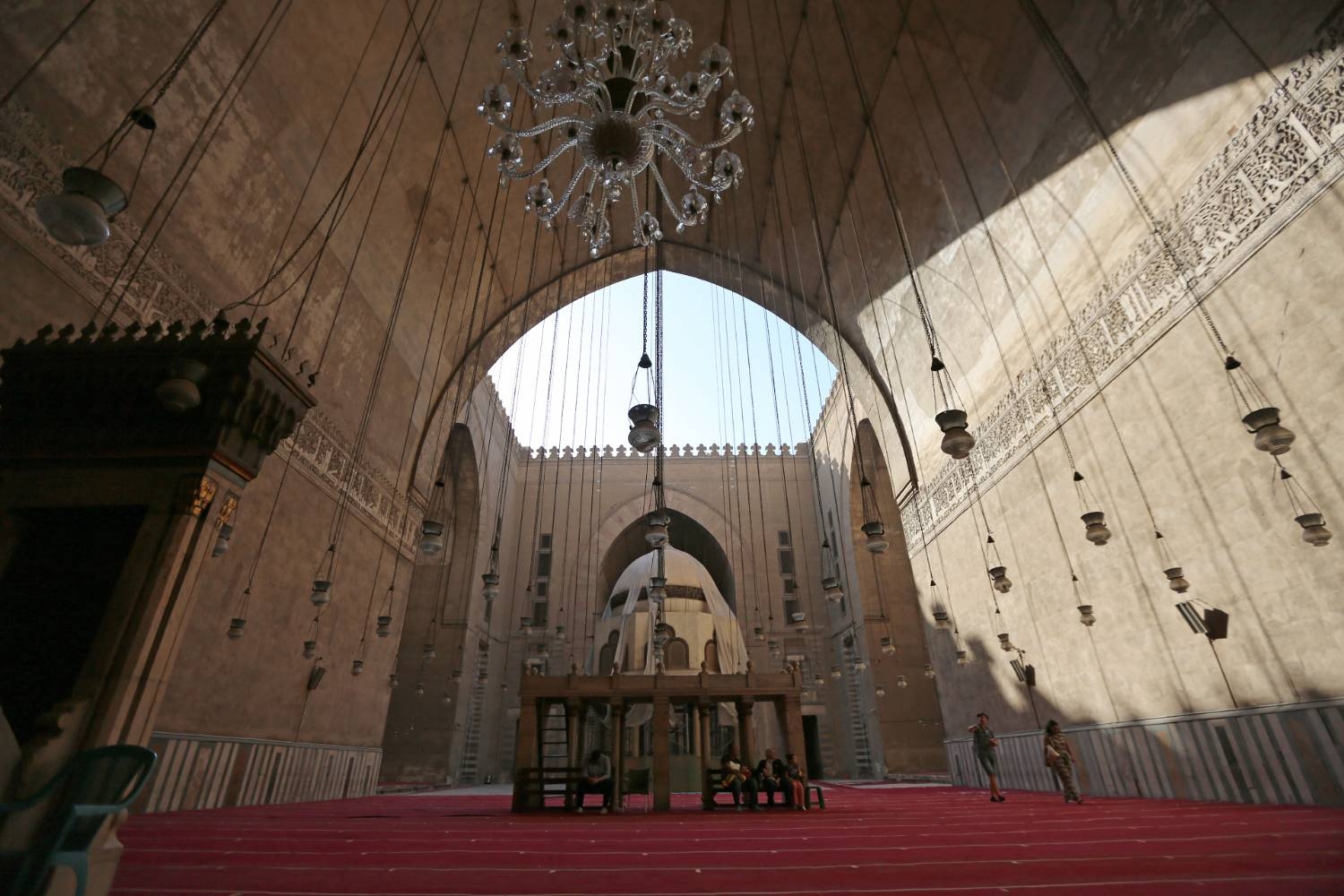
Inside, Quranic verses in kufic script are etched into walls painted with floral designs, and gilded inscriptions surround the mihrab, described by some, as the most beautiful in Egypt.
The mosque is large, 150m in length and covering an area of 7,906 sqm. Inside, its inner courtyard of coloured stone and marble masterfully shuts out the street sounds of an energetic Cairo.
Each of the four walled rooms that surround the courtyard and give it its cruciform, or cross shape, houses a different school of Islamic jurisprudence - Shafi, Maliki, Hanafi and Hanbali. There is also a mausoleum, where it is believed that the sultan himself is buried.
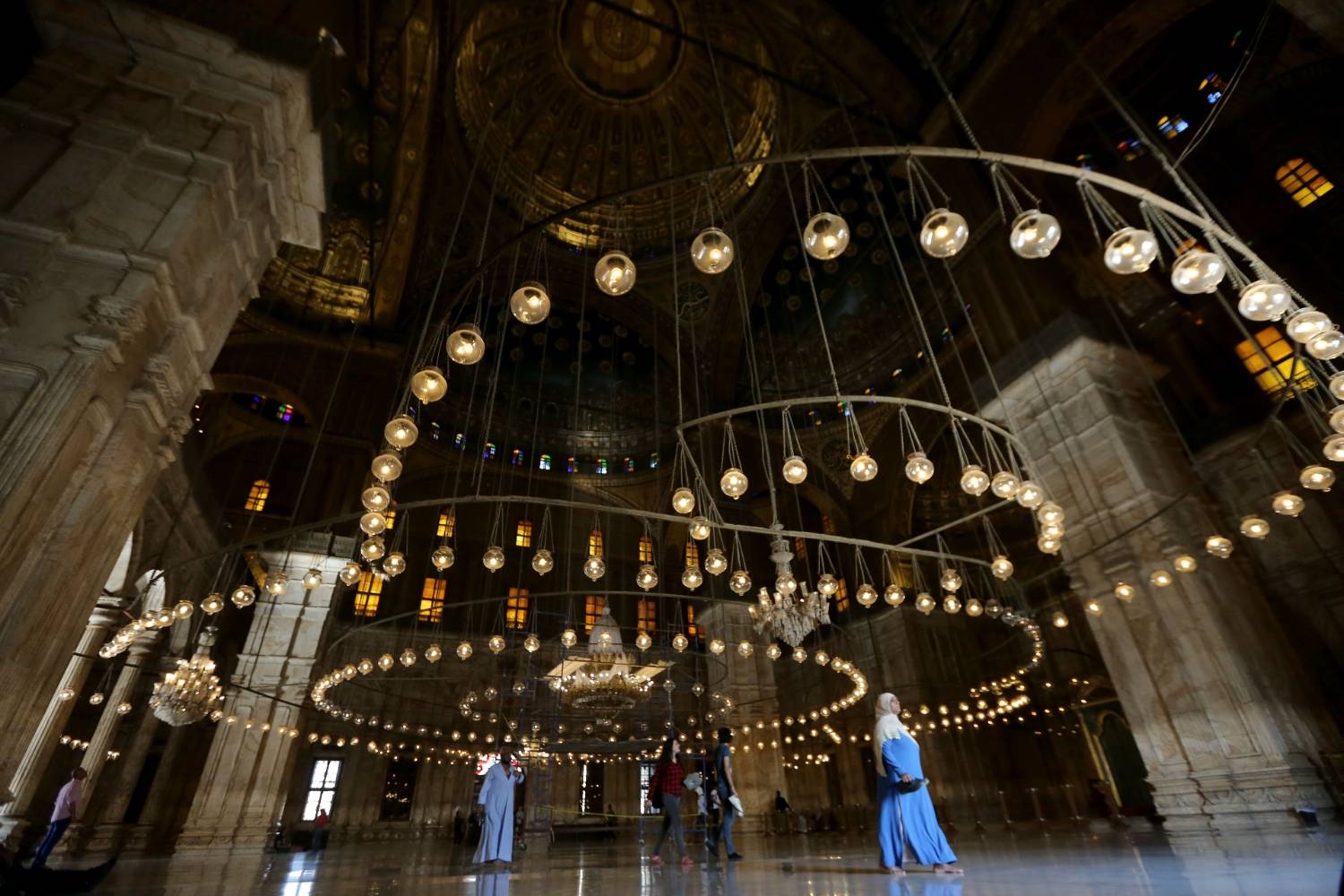
Great Mosque of Muhammad Ali Pasha
Ottoman rule in Egypt started in 1517, turning the country into a province of the empire, although one still nominally ruled by the Mamluks. The biggest test to Ottoman dominance in the region was Napoleon's invasion of Egypt in 1798, which was repelled partially by an Albanian-Ottoman officer named Muhammad Ali Pasha, who laid the foundations for the modern Egyptian state.
Muhammad Ali became de facto independent from the Ottomans, and made himself the ruler of Egypt, holding power until his death in 1849. Under Muhammad Ali, Egypt underwent a rapid modernisation process, borrowing European styles of bureaucracy and military administration.
The Albanian sought to cement his legacy in the form of grand monuments, one of which is the Muhammad Ali Pasha Mosque. Wanting the mosque to resemble Istanbul's iconic Sultan Ahmed Mosque, or Blue Mosque, he brought in Turkish architect Yusuf Boshnak to design the building.
Built in 1830, its double minarets tower above Cairo's skyline, the tallest in Egypt at 84 metres high. In true Ottoman style, a resplendent dome sits proudly in the centre, surrounded by four smaller domes. Coated with a layer of alabaster, the mosque is also known as the "Alabaster Mosque".
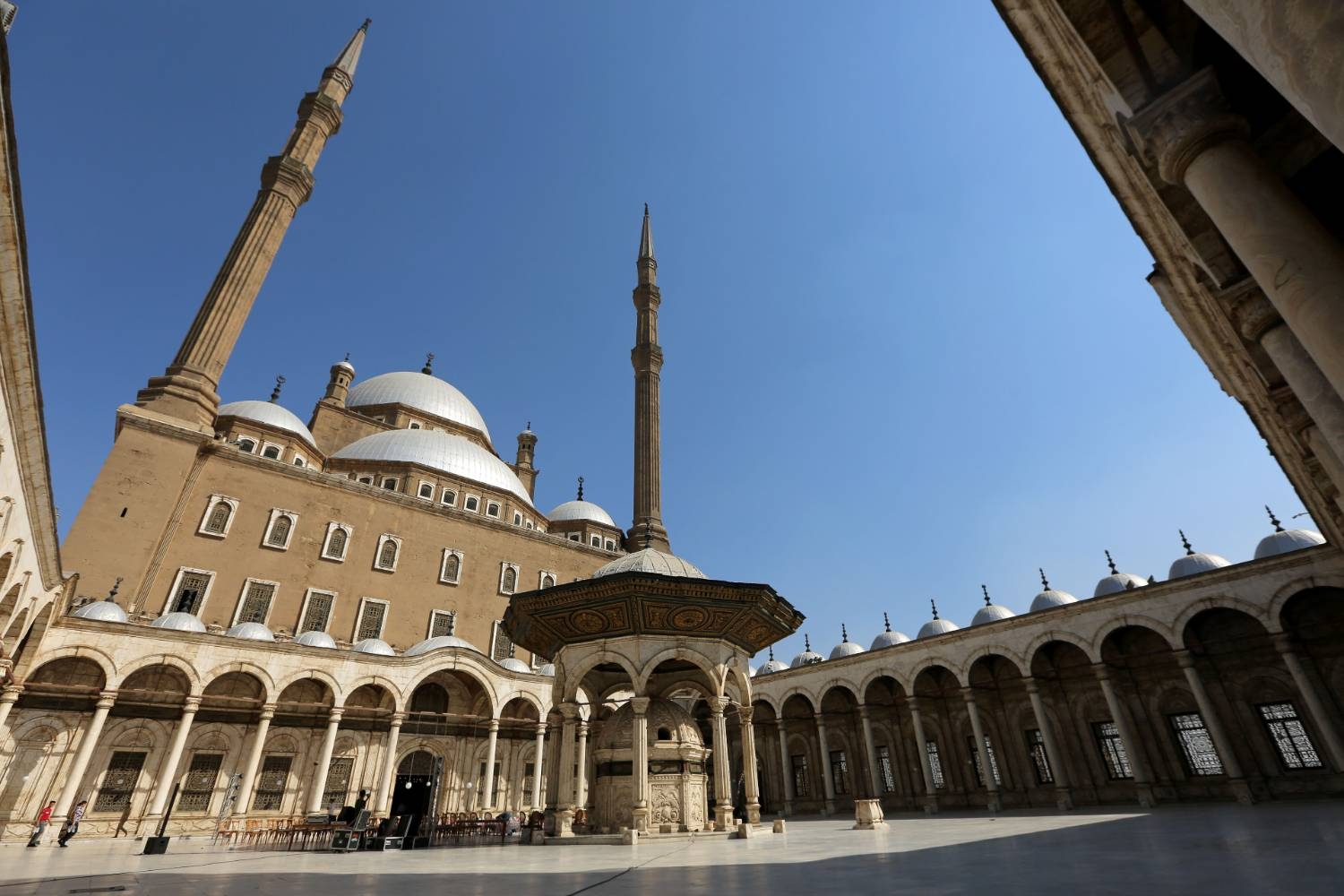
On a hill in Cairo's historic citadel, the Muhammad Ali Mosque provides panoramic views of the Egyptian capital, with the River Nile and the pyramids of Giza visible in the distance..
Its courtyard features a copper clock tower, a gift from French King Louis Philippe in 1845. In return, Muhammad Ali gave the French monarch the obelisk of Luxor, which still stands in the Place de la Concorde in Paris.
A white marble mausoleum housing Muhammad Ali's tomb sits at the mosque's entrance, allowing visitors to pay their respects to the Albanian leader.
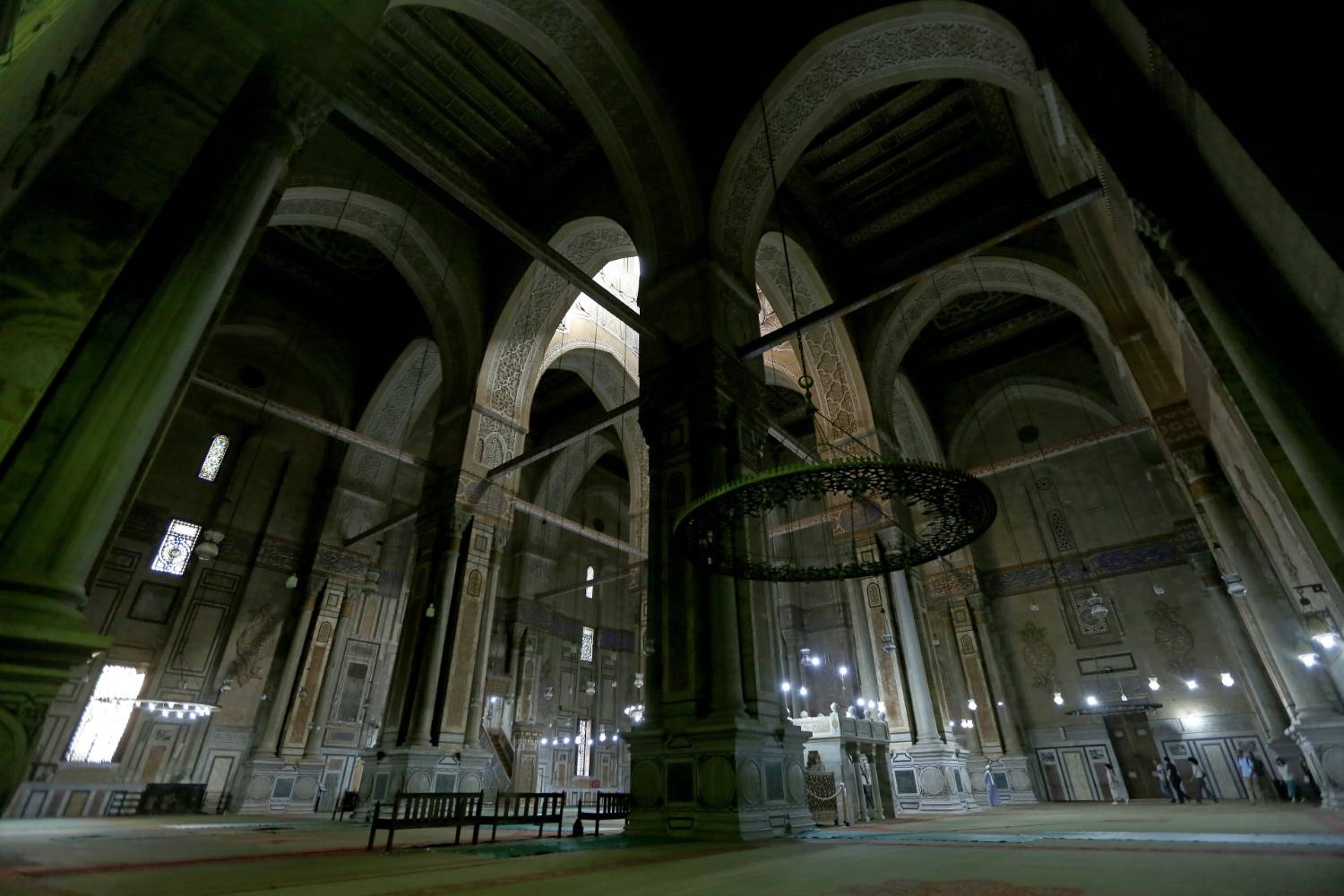
Al-Rifai Mosque
Within a stone's throw of the Sultan Hassan Mosque is the Al-Rifai Mosque. With similar exteriors, some visitors are confused into thinking it is the same mosque split in two, but the Al-Rifai Mosque was built to complement harmoniously rather than compete.
This mosque was commissioned by Khoshiar Hanem in 1869, but was not completed until 1912, taking 43 years to build. Also referred to as Hoshiyar Qadin, Khoshiar was a Romanian princess and daughter-in-law of Muhammad Ali Pasha after marrying his son, Ibrahim Pasha, the Khedive of Egypt.
The mosque's first designer, Hussien Fahmy Pasha, died during construction, and it was completed by Max Herz, a Hungarian architect who also designed Cairo's Museum of Islamic Art (Bab al-Khalq).
Khoshiar had wanted to build a mausoleum for the royal family, and the mosque serves this purpose. Many royals are buried at the site, including King Faruk and his wife, Farida, and of course Khoshiar herself. Iran's last shah, Mohammad Reza Pahlavi, was buried within the mosque after fleeing the Iranian Revolution and being given refuge in his last days by then-Egyptian president Anwar Sadat.

Built on the location of the older Ayyubid-era Al Zakhira mosque, the site of the Al-Rifai Mosque was already home to the burial places of several Islamic saints and scholars, whose tombs have been incorporated into the current mosque. A smaller section is set aside for traditional prayers.
It was also the base for the Zawya of Al-Rifai (Islamic religious school), named after the Sufi leader Sheikh Ahmed Al Rifai, who may have once visited the area but was never buried there.
There are many entrances to the grand mosque, but its main one is its western entrance, marked with a dome, its corners painted with gold. Its imposing high ceilings and 44-towering marble columns are decorated with golden Quranic inscriptions and ebony wood. Coloured marble is said to have been imported from seven countries to decorate the walls.
This article is available in French on Middle East Eye French edition.
Middle East Eye delivers independent and unrivalled coverage and analysis of the Middle East, North Africa and beyond. To learn more about republishing this content and the associated fees, please fill out this form. More about MEE can be found here.



